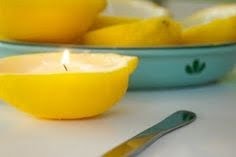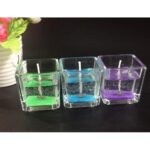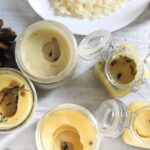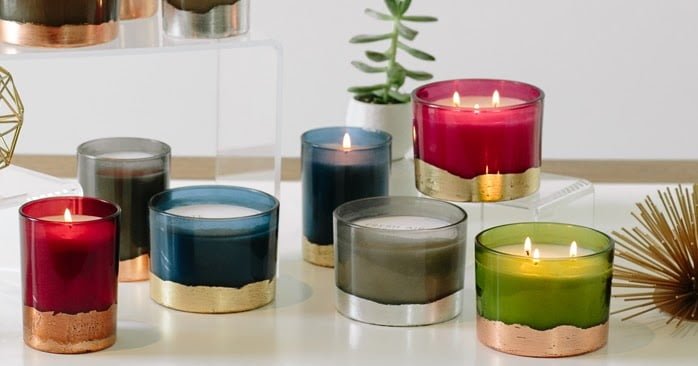Introduction
Candle making can be a great way to introduce both science and art into your homeschool curriculum. This craft promotes creativity, imagination, collaboration, and problem-solving. Even the youngest learners in your homeschool will benefit from the hands-on experience. Plus, homeschool candle making teaches about color blending, sculpting and molding techniques, melting wax, fragrances and lots of safety skills!
Not only is homeschool candle making an enriching activity for your family to enjoy together at home – it can also stimulate conversation around your dinner table. While you melt wax together you can discuss topics like the chemistry behind why and how it works as well as some of the math and measurements involved as you weigh ingredients or measure quantities.
By exploring candle making together at home during homeschool hours, parents have the chance to bond with their children while learning more about their interests and aptitudes when it comes to various skills. Candle making encourages environment awareness by reducing waste with upcycling candles containers that could otherwise go into the litter stream. Through this project, kids are challenged to think of ways they can repurpose materials from items found around the house such as jars or cans for creating unique works of art out of wax! Additionally, teaching fire safety habits when dealing with melted wax or burning flames provides an important lesson for everyone involved in endeavors such as this one. This type of project has many benefits even beyond what is highlighted above.
Essential Ingredients and Tools for Candle Making
To make candles at home, you’ll need to stock up on the essential ingredients and tools for candle making. First and foremost, find a wax that is suitable for candle making such as soy or beeswax. Both are easy to work with and have properties that are suitable for home crafting. You’ll also need wicking material, which will be the core of your candles. There are many types of wicks available in varied sizes, so decide based on the type of waxes you’ve acquired; cotton or hemp wricks tend to work best with vegetable-based waxes like soy. Furthermore, you will need something to melt your waxes: either a double boiler or an electric pot can do the trick here. Finally, add in some natural dyes or scents if desired; these items can be found easily in craft stores. Be sure to select safe colorants for a scented product and make sure your molds comply too! With all of these supplies readily available, now it’s time to get candle making!
When gathering materials for candle making at home, consider purchasing additional tools such as a thermometer – very important! This instrument enables you to gauge the temperature of your melting wax and ensure that your candles don’t exceed any dangerous temperatures upon burning them. Other accessories include pouring pots that safely contain large amounts of melted wax , dye blocks which allow you to create marbled effects on your candles when using multiple colors , and mixing spoons used for stirring scented oils prior to their addition into the melted wax. Additionally, durable silicone molds come in incredibly useful when it comes to giving texture or detail to the candles’ shaped and can be purchased online as well as in craft stores. Lastly don’t forget some safety equipment like oven mits) or heat resistant gloves as molten wax can cause severe burns without proper protection!)
Step-By-Step Guide to Crafting Simple Homemade Candles
Candlemaking is a fun and rewarding activity for children of all ages. It can be easily done at home with some basic supplies and instructions. Here are the steps to make simple homeschool candles:
1. Gather your supplies: A large heat-resistant bowl, wax flakes, candle wicks, fragrance oil (optional), saucepan, thermometer, oven mitts, coloring dye (optional).
2. Put your wax in the bowl and slowly melt it in the saucepan over low heat. Monitor the temperature using the thermometer to make sure it does not exceed 125 degrees Fahrenheit.
3. Once melted, add your desired fragrance and color to the wax mixture. Stir gently using a wooden spoon or chopstick.
4. Place a candle wick into each of your desired containers—teacups, jars or tins are recommended but you can also use molds if preferred. Secure the wicks by either placing them on top of the container or tying them around a pencil and resting it across the rim of the container once the wax cools down slightly so it will sit in position – this helps keep the wick straight as you pour in your wax mixture..
5. Turn off the heat and while wearing oven mitts carefully pour your liquid wax mix into each container making sure that it fully covers all of your wicks before allowing it to cool and harden completely to form candles .
6 .Once cooled remove from containers , trim any loose threads from each wick then light up your homemade delight!
Safety Guidelines for Homeschool Candle Making
Homeschool candle making can be a great activity for both students and parents to enjoy. However, it is important to keep safety at the forefront of this activity, as the process involves heating wax and letting hot wax come into contact with others. The following safety guidelines should be shared with your students before you begin a candle making project at home:
1. Always have an adult present when handling wax and melting tools like double boilers, hot plates, and thermometers.
2. Make sure that surfaces where candles will be made are heat-resistant and non-flammable.
3. Wear protective gear such as an apron, gloves, goggles, and long sleeves when dealing with heated tools and liquid wax.
4. Keep flammable materials away from any source of heat; such materials include paper towels or magazine pages, curtains or drapery fabric etc.
5. Never leave open containers of hot wax unattended. Keep all heated posts far away from children’s reach or put them in another room as soon as possible after use
6. Do not pour hot melted wax directly onto countertops or other unprotected surfaces; use heat resistant molds instead for larger batches of candles.
7. Never pour hot melted wax down drains; once the wax cools it could cause clogging issues in pipes and drains leading to costly damage later on!
8 Set up a designated area away from children where all candle-making supplies can be securely stored out of sight when not in use 9 Before lighting candles make sure to always check wicks for excess length; trimmed wicks can prevent smoke residue in the air!
Ideas for Decorating Homemade Candles Uniquely
Decorating homemade candles can be a fun way to mix up your homeschool lessons. There are a number of creative ways that you can use materials from around the house to give your candles festive and unique looks. Consider these ideas when decorating homemade candles:
1. Make an impressions candle – Use objects such as leaves, shells, or lace to press marks onto dried wax on the surface of the candle. You could also paint stencils on the surface. Just make sure that the objects are completely dry and have no oils on them before laying them onto the wax.
2. Create a layered effect – If you want to make more complex designs, you can layer varying colors of wax paper and carve away parts, while melting at temperatures lower than what you would use for making candles. This creates an eye-catching design with simple supplies.
3. Use decorative features – Place colorful items such as ribbons, beads, glitter or other decorative features into grooves or crevices in your wax for interesting decorations without having to go overboard with complicated steps.
4. Wrap with twine or fabric – Give your finished product an even prettier look by wrapping it with twine or fabric once cooled and hardened—you could even combine this technique with other decorative features like ribbons or vintage lace for a truly one-of-a-kind look!
Advantages of Candle Making for Homeschoolers
Candle making can be a great way for homeschoolers to learn about science, develop artistic expression, and practice problem-solving. Beyond the educational benefits, candle making is a fun and rewarding activity that can bring hours of enjoyment and delight to any home. Not only are candles aesthetically pleasing, they also create warm atmospheres that lend themselves to deeper conversations, both scholarly and casual.
In addition to the already mentioned advantages of candle making for homeschoolers, the activity provides valuable life lessons such as time management and self-discipline. Homeschoolers will work at their own pace since it is possible to craft candles of varying sizes and colors in one session. For example, homeschoolers might choose different colors of wax chips or melted wax beads to match their workspaces or moods. Through experimenting with various pours and practicing patience while waiting for candles to cool and harden, children will gain an understanding of the importance of having goals set from start to completion – something that is essential in everyday life.
Furthermore, constructing perfect candles requires an enormous amount of trial-and-error processes — which once again help hone essential analytical skills for children. This crafting experience stimulates the mind and encourages young learners to think outside the box when it comes facing obstacles encountered along the way. Finally, homeschoolers will gain a sense of accomplishment — not just from creating unique items but also from perfecting a technique through diligent practice.
Summary
Making candles is a great activity for homeschoolers because it offers hands-on learning and creative expression. Parents and educators can also use candle making to create an engaging, and even social experience in a time when in-person social interactions are limited. As kids of all ages and levels of experience become more familiar with the craft, they will find success as they gain knowledge and practice key skills like dexterity, focus, math, problem solving, artistry and design. And at the end of the day, they can enjoy their own unique creation – the perfect reward for a job well done! Overall, homeschooling families embrace candle making as an especially meaningful project to work on together.

Welcome to my candle making blog! In this blog, I will be sharing my tips and tricks for making candles. I will also be sharing some of my favorite recipes.





